P
pack
One of the base-ten pieces that is often used to represent 1000. The block is a 10 × 10 × 10 arrangement of bits.
(See also base-ten pieces.)

pages 71, 78–83, 84
palindrome
A number, word, or phrase that reads the same forward and backward (e.g., 12321 or ANNA).
pages 146–147
paper-and-pencil strategy
A method for problem solving by writing computations down. The all-partials method and the compact method are examples of paper-and-pencil strategies.
(See also expanded form, all-partials method, and compact method.)
pages 136, 141, 144, 161–163
parallel faces
Faces on a three-dimensional shape that are the same distance apart and never meet.
pages 321–322
parallel lines
Lines that are in the same direction. Two lines that are always the same distance apart and never meet.

pages 319, 321
parallel sides
Sides on a shape that are always the same distance apart and never meet.

pages 311–312, 321
parallelogram
A quadrilateral with two pairs of parallel sides.
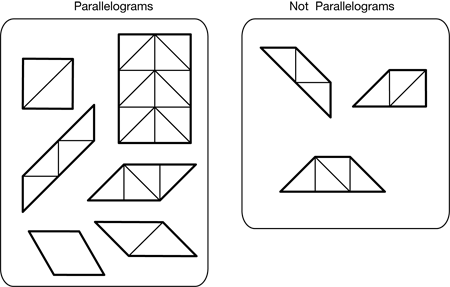
page 312
part
A section of a whole. For the unit whole to be divided equally, the parts may be different shapes but must be the same size.
pages 205, 246, 248, 259, 364–365
partition
1. To divide a shape into parts; e.g., a puzzle.
2. To divide a number into parts.
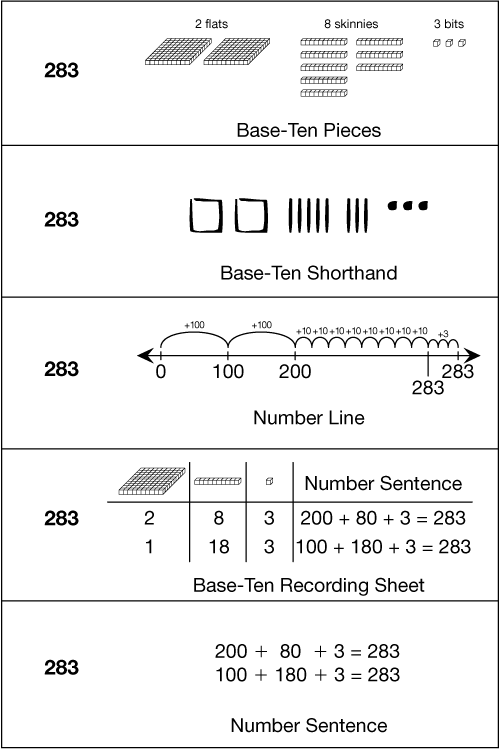
pages 78, 81, 90
partitive division
Division as equal sharing. The total number of objects and the number of groups are known. The number of objects in each group is the unknown. For example, Frank has 144 marbles that he divides equally into 6 groups. How many marbles are in each group?
(See also measurement division.)
pattern
A list of numbers or objects that follow a certain sequence, rule, or set of rules. For example, if it takes 8 lemons to make each pitcher of lemonade, you might notice that the number of lemons increases by 8 each time another pitcher is added.
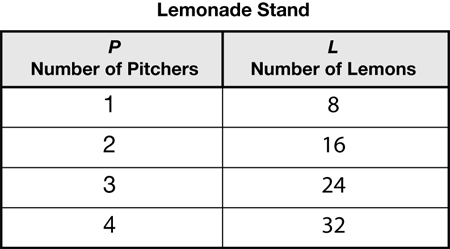
pages 3, 6, 12, 22, 35, 39, 44, 46, 63, 128, 199, 206, 234–235, 243, 293, 297, 309, 353–356, 360–361
pentagon
A polygon with five sides.
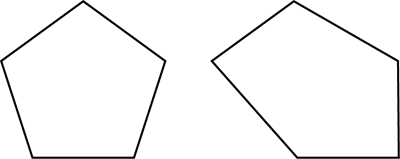
perimeter
The distance around a two-dimensional shape.

page 295
picture graph
A graph that uses pictures or symbols to show data.

pages 13–14
pint
Unit used to measure volume in the U.S. Customary System. There are 16 fluid ounces in a pint. There are also 2 cups in 1 pint.
place value
The value of a digit in a number depends on where it is placed. For example, the 2 in 329 stands for 2 tens but the 2 in 7239 stands for 2 hundreds.
pages 70, 71–77, 78–83, 84–85, 86–90, 91–92, 130, 132, 142
point graph
A graph that represents data as points. A point graph is often used to represent data when both of the variables are numerical.

page 361
polygon
A two-dimensional closed shape with straight sides.
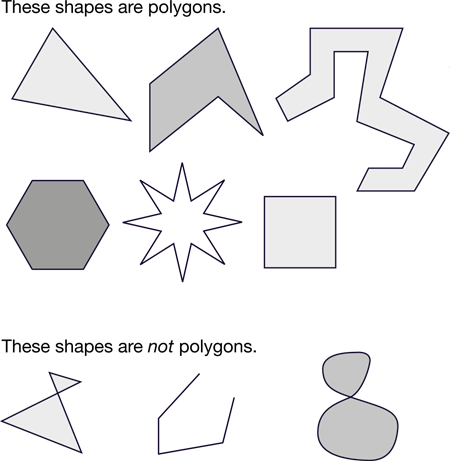
polyhedron
A connected three-dimensional shape whose surface is made of polygons.

population
A collection of persons or things whose characteristics will be analyzed in a survey or experiment.
pages 8–11, 13
Power Solids®
A set of 12 plastic geometric three-dimensional shapes.
(See also three-dimensional.)
prediction
Using data to tell what is likely to occur. Making a good guess based on data.
pages 6, 11, 23, 330–347, 350–351, 356, 358–359
prime number
A number that has only two factors. For example, 7 has exactly two factors, 1 and 7.
prism
A three-dimensional shape that has two congruent faces, called bases, that are parallel to each other, and all other faces are parallelograms.
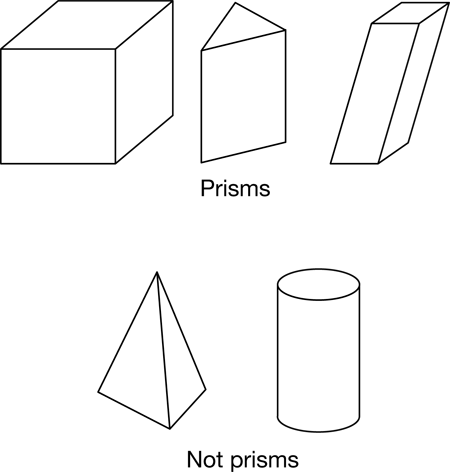
pages 314–318, 322
product
The answer to a multiplication problem. In the problem 3 × 4 = 12, 12 is the product.
pages 58, 63, 64, 203, 204, 206, 234–235, 239, 364–365, 369
property
A characteristic of a shape that helps to identify it (e.g., number of sides, at least one right angle, etc.).
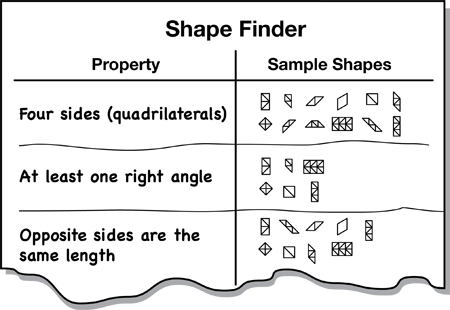
pages 310–313, 321










